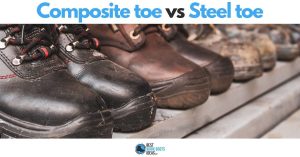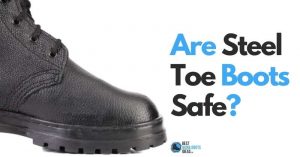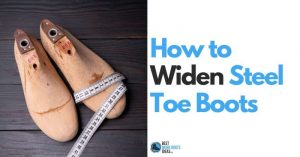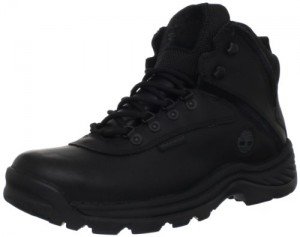What is Alloy Toe? Get the Complete Lowdown to Help you Learn about this Toe Type
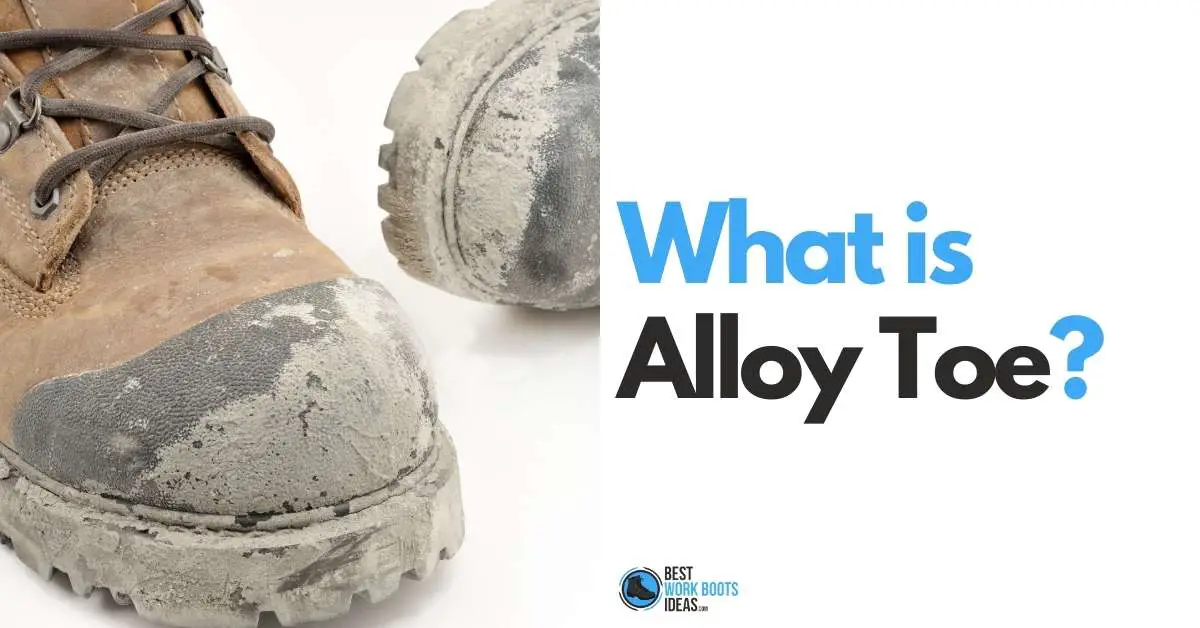
So you’re looking into buying a new pair of work boots, but there are all these details to sort through.
One of the specs you might notice is that there are different safety toe styles.
Traditionally boots have been made with steel toes, but in recent years there are new materials used so you have options.
One of the options you’ll see is an alloy toe. In this article we will get into exactly what an alloy toe is.
We’ll also discuss some of the reasons you might or might not want boots with an alloy toe.
I’ve never had alloy toe boots, but I am someone that wore work boots for many years.
Not buying alloy toe boots was a conscious choice.
I had a contracting business and I often came into contact with electricity, so alloy toe boots were a bad choice for me!
If that doesn’t make any sense to you, don’t worry, keep reading and it will.
Contents
What is an Alloy Toe Boot?
An alloy toe boot is a work boot with a toe cap constructed from an alloy of metals.
This differentiates it from other work boots that have toe caps constructed from other materials.
Boots with alloy toes are ASTM F2413 rated just like any other work boot, and will keep you safe like traditional steel or modern composite toe materials.
The goal behind building toe caps with alloys was to create a lighter boot for workers whilst still offering a high level of protection.
Steel does a good job at protecting your toes, but it’s rather heavy.
Those buying work boots are already doing physically demanding jobs, why carry around some extra steel in your boots if that’s not necessary?
Alloy toes also tend to be thinner, which allows manufacturers to make less bulky boots.
Any improvement to your mobility is sure to be a plus at work.
The battle of steel toe vs alloy toe is a debate that goes on amongst those in the construction world.
New composite toes have also been thrown into the mix in recent years.
I don’t think there’s a right answer, or winner, it just depends on the needs of the user.
Alloy Toe Cap
The toe cap is a quarter-circle piece that’s built into the front (toe box) of most safety boots.
It’s like a little amphitheater dome that protects your toes from any falling objects or crushing weights.
I’ve had a number of potentially injurious events happen to my feet while on the job, and thanks to my ASTM rated toe cap, I’ve been fine.
It’s sometimes shocking how well they work,
Any time you see a boot advertised as alloy toe or something-toe they’re referring to the material used to make the toe cap.
Materials Used in Alloy Toe
The most commonly used alloys in toe caps are a mixture of titanium and aluminum.
An alloy is any substance that is created by mixing two or more metals together, or a metal with another element.
Alloys have been used for centuries as they can offer properties that the non-alloy metal cannot.
The goal is to get a stronger, lighter, or corrosion resistant metal when using an alloy.
As I noted above, the most common alloy toe materials are made from lightweight materials such as titanium and aluminum.
However, you’ll also find the following elements as well:
- iron
- silicon
- copper
- manganese
- magnesium
- chromium
- Zinc
How Much Weight Can an Alloy Toe Withstand?
Alloy toe caps are approved to handle impacts of up to 75 pounds, and compression of up to 2500 pounds.
Let me explain what that means and how that is determined.
The American Society of Testing Materials (ASTM) is an organization that tests countless numbers of materials, boots included.
They have created a test that is relied on by OSHA to determine whether or not boots can be used in many professions.
You may have seen “ASTM 2413-18 I/75 C/75” in your hunt for boots; it may have read slightly differently, just as long as you see the I/75 C/75 you’re safe.
This collection of letters and numbers states that the boots can withstand a 75 pound object being dropped from up to 18 inches (impact) and the weight of a 2500 pound object rolling over your toe cap (compression).
Getting exact numbers on each boot isn’t something that’s possible, as manufacturers simply want to make sure they pass the ASTM test so their boots are OSHA approved.
If you wanted to know exactly how much weight a particular alloy toe could take, you’re going to need a hydraulic press, an instrument to measure the amount of weight, and a willingness to destroy a pair of alloy toe boots.
You might hear some people say that steel is still stronger than alloys, and that isn’t incorrect!
That said, it’s inaccurate to claim that steel will keep your feet safer, as the only data we have is that a boot meets the ASTM standard.
It’s also about how the material is used, which you’d have to do some serious research to determine.
For example, metal is stronger than paper, but a phonebook can stop a bullet while a salad bowl can’t.
By the same token, I remember hearing as a child that pound for pound, a spider’s web is stronger than steel cables.
That tells you a fact, but doesn’t matter at all in terms of practical application.
How a material is designed, how much of it is used, and how it performs in tests are the best ways to decide if something is good or bad for your use.
When viewed in this light, alloy toes are just as effective as their steel counterparts.
Reasons to Get an Alloy Toe
While there are some differences between steel, composite, and alloy toes, all the toe caps you find in boots undergo the same ASTM tests.
Regardless of properties of the material used, you can rest assured that they will protect your toes as each material has been subjected to the same stress tests.
Below are a couple features of alloy toes that make them desirable.
Weight Reduction
Alloy toes are around 30-50% lighter compared to their steel counterparts.
This might not seem like a big deal when you pick them up in a store and do a comparison by hand, and in that case it’s not.
But consider that the difference in weight is multiplied by tens of thousands of steps a day, every day you work.
A 2 ounce increase in weight for the person that walks 20,000 steps is an increase of 2,500 pounds lifted by the end of the day!
Any amount of weight you can trim from your work gear is helpful, and alloys provide that perk.
Thinner Construction
Alloy toes provide strength without as much bulk, so they can make for more comfortable boots.
Designers can focus more on the ergonomic nature of their product rather than just figuring out how to fit the toe cap in there.
Nobody wears work boots because they’re the most comfortable footwear available.
We wear work boots for their protective features, because we like our feet and toes intact and usable at the end of each work day; their awkwardness is an acceptable trade-off.
Alloy toe boots will give you a quickness on your feet that isn’t possible with other materials.
Downsides of Alloy Toe
There are a couple reasons you might not want an alloy toe, but besides the cost, they share these in common with steel toe boots.
Cost
Alloy toes tend to run pricier than traditional steel toes.
As with any advancement in material development, a better product fetches a higher price.
This is a general rule of thumb, and won’t necessarily be true every single time.
I’m sure you’ll be able to find a pair of alloy toe boots that cost less than a steel toe pair.
Conduction
Alloys will conduct electricity. Just because they’re not steel doesn’t mean they’re not a metal.
In the beginning I mentioned that I never used alloy toes, it’s for this reason.
I worked in residential construction as a carpenter.
Even though I was not an electrician, I was always encountering wires, sometimes as a surprise!
Of course, it’s possible to get shocked no matter what type of toe cap you’re using.
That said, I always took the attitude that a series of small choices added up to larger protection.
It’s for these reasons that alloy toes wouldn’t be good for anyone that works with or near electricity.
Temperature
Alloy toes will respond to temperature, be it hot or cold.
This is something that you might not consider when buying a pair of boots, but you’ll definitely notice in July or January.
For some people, this is not a deal breaker. For others it’s something that would affect them greatly.
A lot of this depends on your personal sensitivity to temperature, and how extreme the climate is where you live.
Hope this has improved your understanding of what an alloy toe is and helps guide your decision when looking for new safety footwear.


